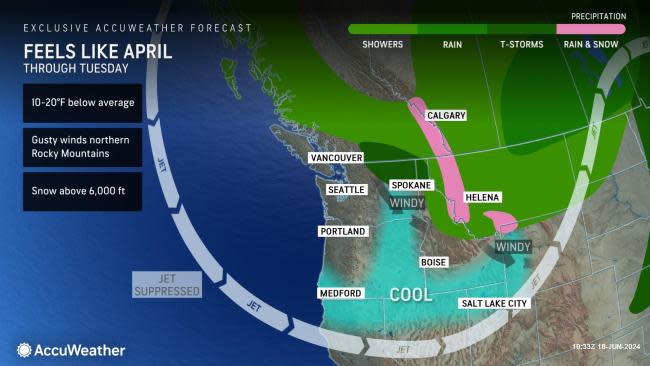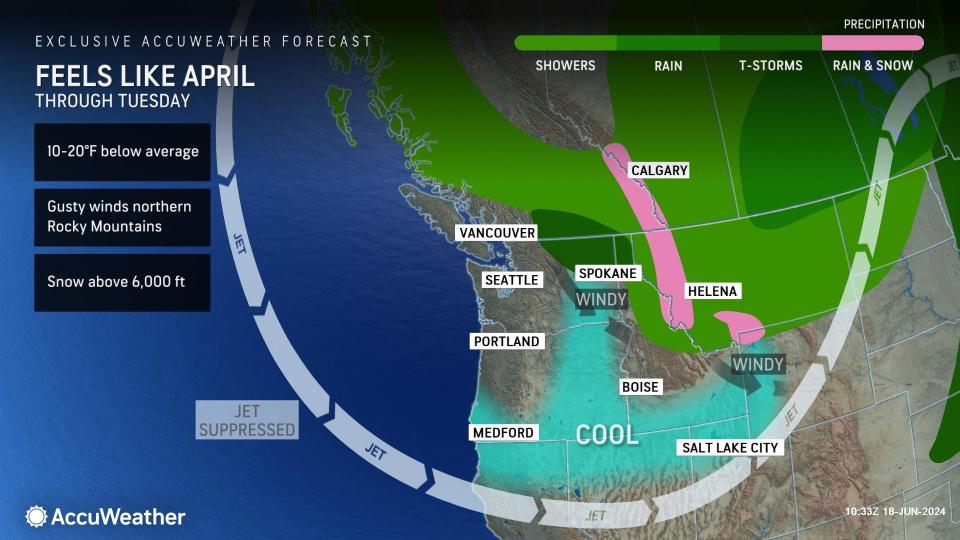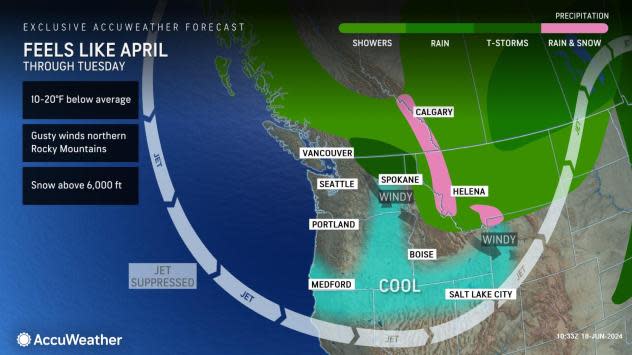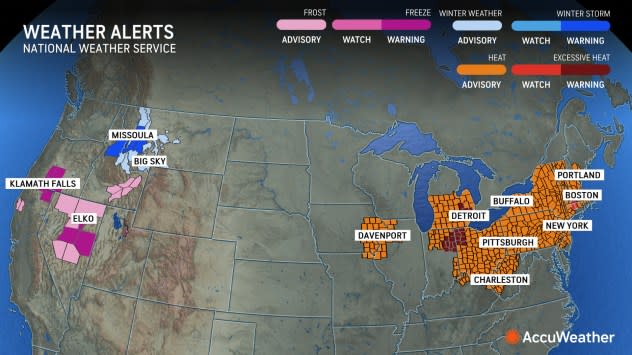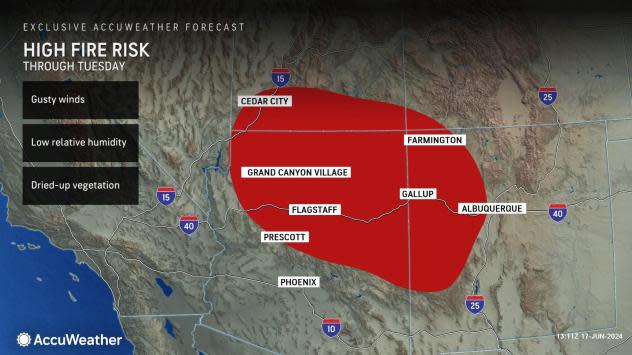Wild West: Snow aims for northern Rockies as wildfire danger lingers to the south
 |
The official start of summer is quickly approaching, but part of the northwestern United States is looking and feeling months removed from that reality, AccuWeather meteorologists say.
"Since this past weekend, a pair of storms has swept across the Northwest, ushering in a cooler and wetter pattern to the region," AccuWeather Meteorologist Brandon Buckingham said. To the south of these storms, winds will ramp up and keep the wildfire risk elevated in portions of Nevada, Utah, Arizona and New Mexico. Farther east, severe weather and flooding downpours will hit some of the same areas of the North Central states repeatedly this week.
The shift in the pattern might be a shock to the system for some, following a relatively dry and warm first half of June across the interior Northwest.
The map of active weather alerts sheds some light on the upcoming weather pattern, with much of the high terrain of western Montana peppered with winter weather alerts. Meanwhile, the Midwest and Northeast were blanketed by heat advisories as the hottest weather in years takes shape.
 |
U.S. cold and heat advisories on the morning of June 17, 2024. |
"Enough cold air in the upper levels of the atmosphere is expected to bring a late-season round of heavy, accumulating snowfall to the northern Rockies or northern Idaho, western Montana and northwestern Wyoming into Tuesday," Buckingham said.
AccuWeather forecasters expect enough snow to fall to create slippery and difficult travel in the backcountry and over the mountain passes. Across some of the highest peaks, more than a foot of snow is possible.
Regardless of accumulations, the snow will be wet and clingy, making it more likely to stick to and weigh down trees and power lines, leading to potential power outages.
Outside of the mountains, precipitation will take the form of rain, and temperatures will be 10-20 degrees below historical averages for mid-June across the interior. High temperatures will be held to the 40s, 50s and 60s in many cases, which is more typical of April.
Mother Nature will press pause, at least temporarily, on the wildfire threat across the interior Northwest thanks to the cool, wet conditions. Farther south, the pattern shift will prolong the risk of fire ignition and spread.
"The storms moving across the Northwest have the potential to produce widespread gusty winds across the Great Basin and Southwest, which could quickly ramp up wildfire concerns," Buckingham said.
 |
The zone from southern Utah through northern and central Arizona, southwestern Colorado and western New Mexico will face gusty winds and dry air. When paired with parched vegetation, these conditions will result in a high fire risk. Even in areas outside of this zone, experts urge people to use caution when handling outdoor flames.
This week as a whole will feature less extreme heat across the Southwestern states, AccuWeather meteorologists say.
"Even in places removed from any rain or snow chances, temperatures will trend downward across a majority of the West through Tuesday," Buckingham said.
Additional reporting by AccuWeather meteorology intern Peyton Simmers.
Want next-level safety, ad-free? Unlock advanced, hyperlocal severe weather alerts when you subscribe to Premium+ on the AccuWeather app. AccuWeather Alerts™ are prompted by our expert meteorologists who monitor and analyze dangerous weather risks 24/7 to keep you and your family safer.

